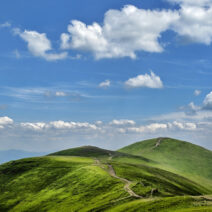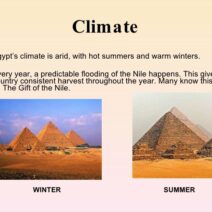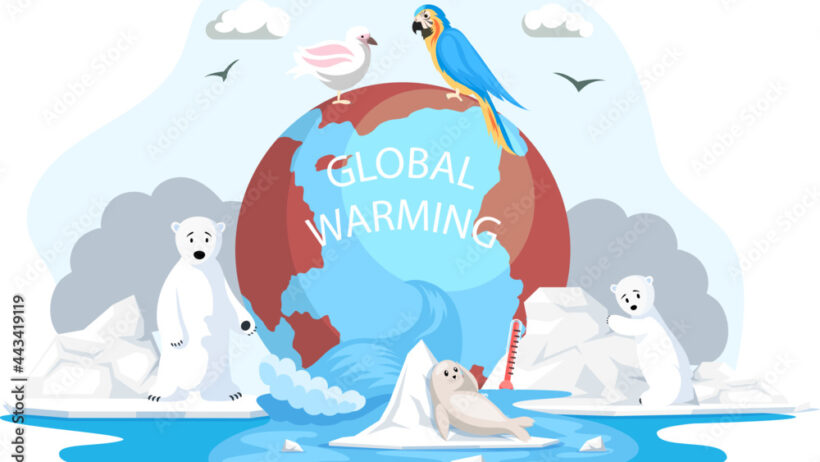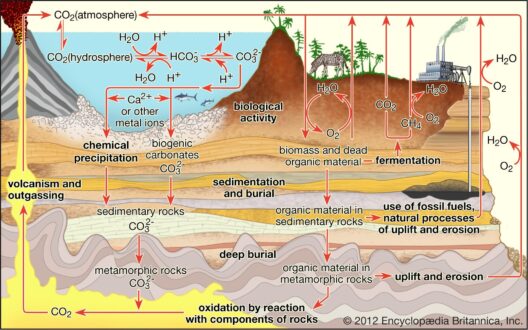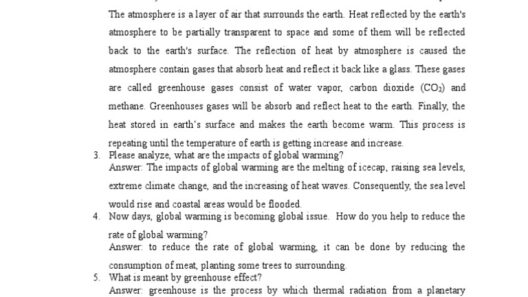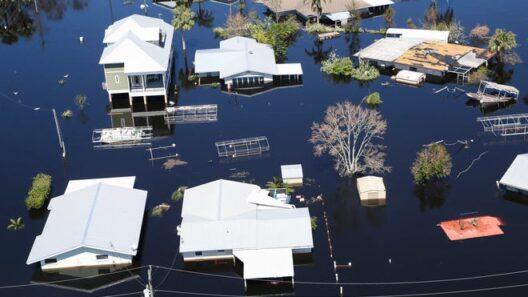As the Earth warms, a quiet tempest brews within the very fabric of our ecosystem. The ramifications of global warming extend far beyond mere temperature increases; they ripple through the living tapestry of our natural world, weaving a narrative rife with transformation and distress. This phenomenon, an unrelenting specter of change, places both fauna and flora in an untenable predicament, reshaping habitats and altering the very rhythms of life.
The metamorphosis begins with the earth’s atmosphere. The gradual accumulation of greenhouse gases, the relentless embrace of carbon dioxide, and the insidious presence of methane have conspired to create a thermal blanket that engulfs our planet. This blanket, once a mere comfort, has morphed into a suffocating shroud. For animals, particularly those with specialized habitats, such as polar bears and coral reef fish, the warming world presents an existential crisis. The Arctic ice melts like sugar under a scorching sun, erasing crucial hunting grounds for polar bears and threatening their survival.
Equally dire are the ramifications for marine ecosystems. Ocean acidification, another sinister byproduct of increased carbon emissions, is a devastating force. When CO2 dissolves in seawater, it forms carbonic acid, wreaking havoc on shellfish and coral reefs. The latter, often dubbed the rainforests of the sea, serve as a sanctuary for multitudes of marine species. With their decline, a ripple effect ensues, disrupting food chains and diminishing biodiversity. Each coral bleached white is akin to a silent symphony’s note disappearing, leaving a void where vibrant life once thrived.
The terrestrial world is not spared from this exhaustive scrutiny. As temperate zones shift toward the poles, species find themselves grappling with the pressures of migration. Some species, equipped with the fortitude to adapt, embark on treacherous journeys in search of suitable climates. However, many are left standing at the precipice of extinction, unable to traverse the barriers imposed by human development or the swift pace of climatic upheaval. The iconic monarch butterfly, for instance, must navigate increasingly inhospitable landscapes as its migratory route is altered by temperature fluctuations and habitat destruction.
This upheaval extends into our backyards. Urban environments, often havens of biodiversity, experience their own form of transformation. The phenomenon known as the urban heat island effect exacerbates local temperatures, leading to grave consequences for wildlife. Birds may suffer due to altered nesting periods that no longer align with the seasonal emergence of insects. The cycle of life is thus unceremoniously upended, leading to a concerning decline in urban wildlife populations. In these concrete jungles, the absence of nature’s chorus becomes tangible, a haunting echo of what once thrived.
Equally compelling is the plight of forests, which serve as the lungs of our planet. Deforestation, driven largely by agricultural expansion and urban sprawl, compounds the effects of climate change. The loss of trees not only releases stored carbon back into the atmosphere but also diminishes biodiversity, leading to habitats that can no longer support the myriad species that once called them home. The majestic jaguar, a keystone species in the rainforest ecosystem, becomes increasingly vulnerable as its territory shrinks and fragmentation hampers its ability to find mates.
Climate change also manifests itself through extreme weather patterns, an erratic and unpredictable force. Droughts, floods, hurricanes, and wildfires are becoming prevalent, each event a catastrophic brushstroke on the canvas of nature. Each natural disaster unravels interconnected ecosystems, devastating habitats and reshuffling species in a relentless game of survival. Elephants, as an emblem of resilience, may roam further in search of water, only to find their routes blocked by human settlements. Their age-old pathways become ghost roads, a cruel reminder of a world that once was.
The relationship between climate change and locality cannot be overstated. Consider the plight of small island nations, where rising sea levels threaten the very existence of cultures and communities. The delicate coastal ecosystems, where land meets sea, are equally at risk. Mangroves, vital for coastal protection and biodiversity, are eroding faster than can be replenished as ocean waters encroach upon their roots. The collapse of these ecosystems is analogous to losing the keystone from an arch: without it, the structure crumbles.
The crescendo of this crisis begs an indelible question: what role do we, as stewards of this Earth, play? While global warming casts a long shadow, it is essential to remember that solutions lie within our grasp. By advocating for sustainable practices, supporting conservation efforts, and engaging in meaningful dialogue regarding environmental policies, we can begin to mend the rips in our natural tapestry. Our collective actions can catalyze monumental changes, fostering resilience in both ecosystems and the myriad species that inhabit them.
In this warming world, each of us is tethered to the fate of the other: the fluttering wings of a butterfly, the whispering leaves in a forest, the undulating waves of the sea. The cry for help from our planet reverberates through the air, a plea that we cannot ignore. Global warming is not merely an environmental issue; it is a profound, multifaceted challenge with implications that span generations. It necessitates a unified response, an unequivocal commitment to restoration and preservation.
As we confront the realities of our warming world, we must take inspiration from the resilience inherent in nature. Like the phoenix rising from the ashes, if we address the challenges posed by climate change collaboratively, we have the potential to foster renewal, ensuring that both our species and those with whom we share this planet can persist and flourish against all odds.
